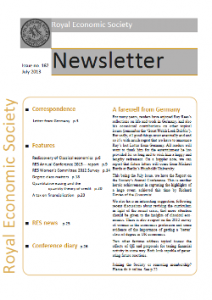Publications - Other
Publication Types:

REF2014 Impact Case Study: Understanding where money comes from and applying credit creation analysis to portfolio management
Other
REF 2014, Impact Case Study, Singled out by name and rated "Outstanding"
Publication year: 2014
Summary of the impact
Research carried out at the University of Southampton into banking, economic growth and development has made Professor Richard Werner a trusted source of advice for economic policy-makers at the highest level, for example for the Financial Services Authority, the Independent Banking Commission, the International Monetary Fund and the Bank of England. Through articles, books and many media contributions, he has promoted a greater public understanding of economics and the financial crisis. His credit creation analysis has also been adopted by two investment funds in their portfolio management, leading to financial gains for investors, outperforming the FTSE100.

Quantitative Easing and the Quantity Theory of Credit
‘Quantitative easing’ (QE), has received much publicity in the past five years. However, its effectiveness remains disputed. Moreover, there are different views about what constitutes QE. It is the purpose of this contribution to review the origins and varying applications of QE, using and thereby explaining the macroeconomic model that gave rise to the concept. Called the ‘Quantity Theory of Credit’, this is arguably the simplest empirically-grounded model that incorporates the key macroeconomic role of the banking sector — a task belatedly recognised as crucial by researchers in the aftermath of the 2008 crisis.
